All about showers in a bathhouse
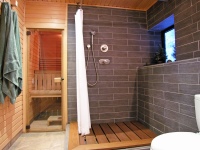
To know everything about the shower in the bath is no less relevant than to understand the furnaces, the arrangement of the walls or the drainage of water. Be sure to imagine how to make it with your own hands without plumbing. In selecting ready-made projects or in compiling them from scratch will have to carefully study the device Russian and tropical showers, take into account the difference between them.
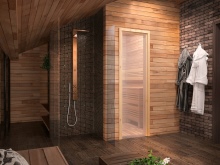
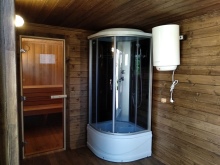
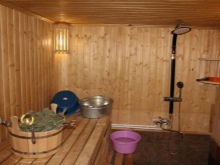
Where to place?
Placement of the shower in the bath is required to be thought through, of course, already at the stage of drafting. Practice shows that if this moment is delayed, serious drawbacks are inevitable. Stationary shower system is placed in any area except the steam room. It is recommended to bring the shower room close to the water points. This reduces the difficulty of installing piping and reduces construction costs. Concrete floors allow you to mount a shower at any point of the bath, taking into account only the feasibility of a particular place.
Summer shower in the absence of a heating tank can be performed under the scheme "bucket-waterfall". In this case, choose where it is more convenient to put the container, where the water will pour from.
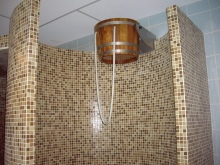
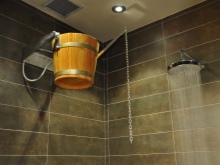
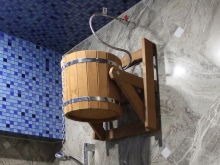
No matter whether the plan provides for a Russian or a tropical shower - it is also necessary to consider the optimal distance taking into account the pumps used. This point is especially relevant when getting water from a well. When arranging the shower in a wooden log house, take into account that the water should get as little as possible on the walls.
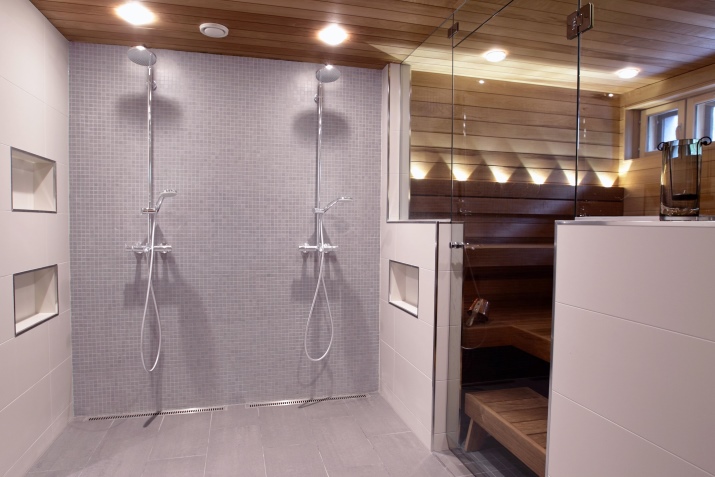
Arrangement and scheme of water supply
If it is possible to supply water to the shower centrally (for example, lead from the bathroom), it is ideal. It is often practiced to pull the pipes on top of the house (through the air). This is relatively simple and allows you to do without extensive excavation work. The only downside is that open pipes can freeze in winter. Even carefully designed insulation does not always help. For the record: to make long spans work more reliably, you will have to use additional fastening with a rope.
When organizing the upper exterior water pipes, the use of low-pressure polyethylene pipes is recommended. They are more reliable than metal ones, and in winter they are more likely to swell than to break from the ice. Additional protection is to avoid placing taps (valves) on the street in the last section of the pipeline. Ideally, there should be none at all. Then all the incoming water will run itself and will not freeze even in the most severe frosts.
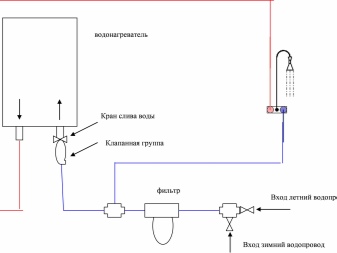
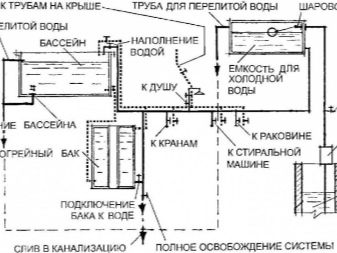
However, in many cases, it is necessary to arrange its flow without a water pipe. Step by step guide, how to make a shower in a log bath without water supply, which is logical, recommends that you first consider the option with the flow of water from the well.
A typical scheme is as follows:
-
lay a trench;
-
Deepen the passage so that the pipe was below the level of frost with a reserve;
-
lay the pipe itself;
-
Insulate the pipe "coat" of polymer materials;
-
punch a channel in the well wall;
-
put the pipe in there;
-
connect it to a conventional pump (pump selection and installation - a separate topic);
-
insulate the well walls (unless this was not done at the stage of construction of the well, which is a gross mistake);
-
insulate the outer house;
-
insulate the whole surface section of the pipeline (optimally with a heating cable).
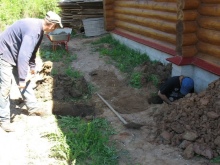
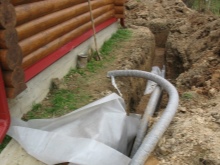
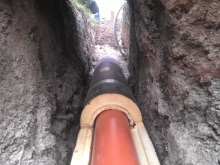
Attention: a heating cable in the permafrost zone should also be laid all along the pipe underground. If there is a well, you can get water from there as well.
Schemes of pipe pulling and connection are made individually. But in any case, as well as when using a well, a pump is needed. Additionally, you will also need a hydroaccumulator.
It is also necessary to take into account the type of created well. The worst quality water is given by surface wells. It is better to drill to the sandy, and even better - to the lime horizon. It is possible to limit drilling to the sandy horizon, if the site contains a layer above that protects against seepage downwards of surface water. Artesian well as a source of water is the best, but sometimes the liquid has to be treated with agents that reduce the hardness.
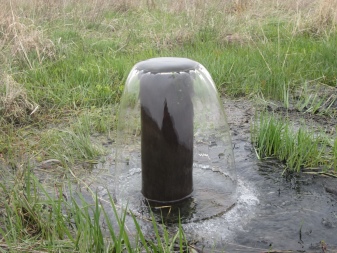
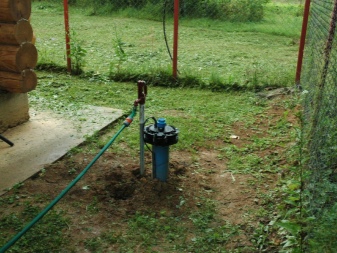
Important: It is recommended to use pumping stations slightly more power than it follows from the calculations.
This is because in underground sources the head is not always stable. And even when fed from the water supply system, this problem is quite common. After the hydraulic accumulator, the scheme usually provides a water filter. The choice of its type and model is determined by the degree of contamination of the liquid; in addition, the use of a storage tank and a boiler may be envisaged.
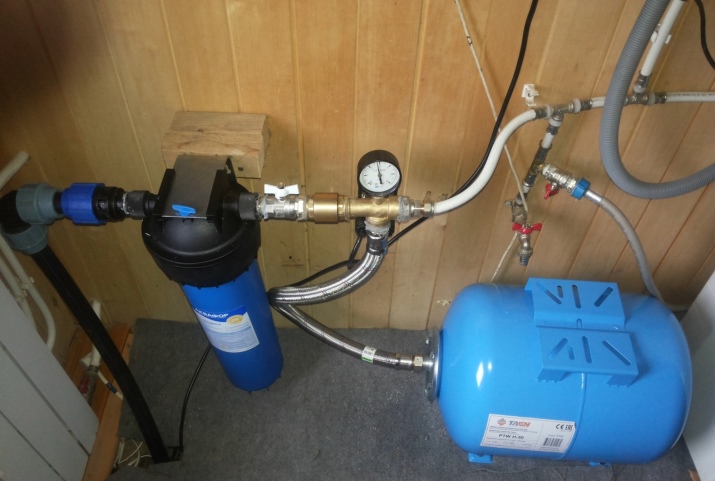
Heating options
Wood-fired boilers.
But just pumping water is not everything. It is mandatory to consider also ways to get a hot flow from the shower. Using a speaker on wood is good that the fuel for it can always be prepared with your own hands. True, it will definitely have to be stored. The height of the columns is up to 2 m, so they can be placed in any room.
A typical design involves the installation of a side mixer with a valve. It is put in production, so you do not need to worry about this. Good models are placed on legs, which significantly increases stability. Doors and handles are usually equipped with inserts that exclude burns. In the rest the choice must be made individually.
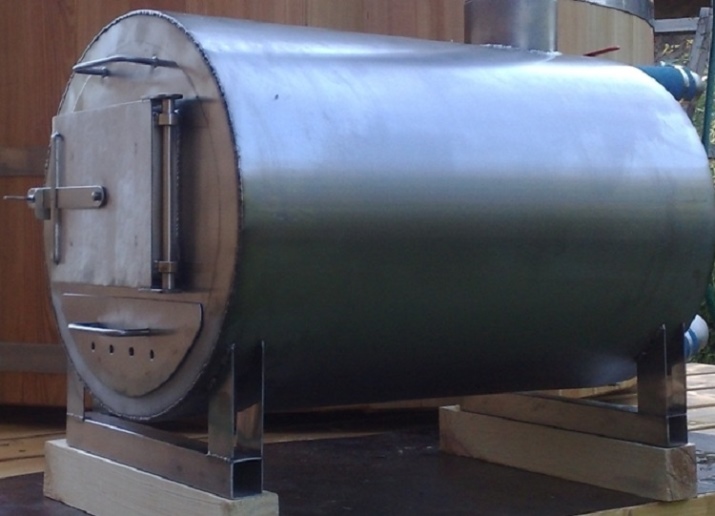
Electric boilers
Using a flow-through or storage water heater on an electric basis is quite possible. In this case, the flowing device is much more practical in the bath than the storage.
In particular, it allows you to eliminate the occupation of excessive space in the building. Therefore, such equipment can be installed even in modest-sized baths without any problems.
In addition, accumulation systems are more difficult to install and will have to be serviced more often; in any case, the capacity should be selected with a margin of 10-15%.
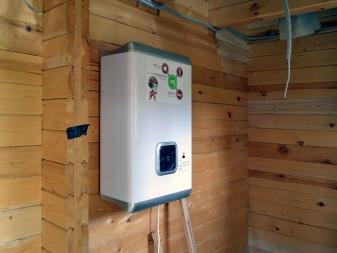
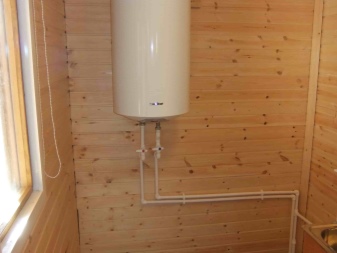
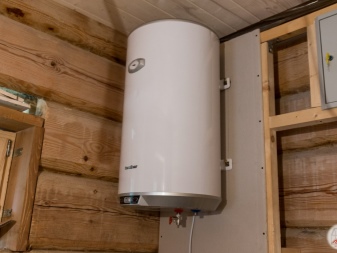
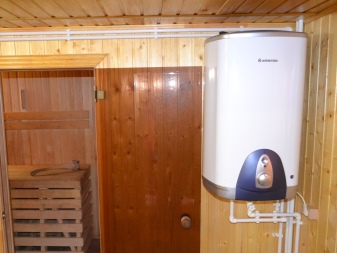
Gas stoves
This option is most appropriate if there is already a connection to the gas grid. Sometimes gas-powered columns can also use cylinder power. This is not too practical and convenient, in addition, the gas can suddenly run out. The simplest models are designed for manual ignition. More advanced modifications can use an automatic start system.
Gas-fired boilers:
-
are relatively compact;
-
economical (compared to electric equipment);
-
Can work immediately with several points of water intake;
-
rather complicated to install;
-
pose a serious risk if operated incorrectly;
-
Need a flue gas exhaust system.
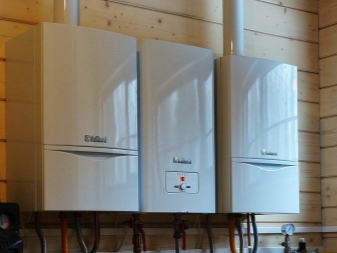
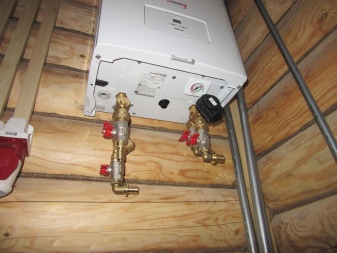
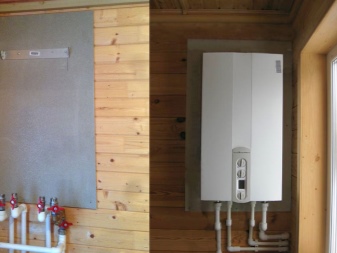
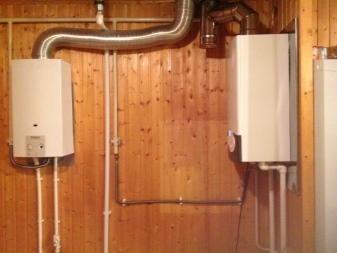
Furnaces
This method of heating the sauna shower is good for its traditionality and suitability for even the most inaccessible places. It can also be used in places where electric or gas heating cannot be connected.
Heating furnaces can be equipped with special faucets that cannot be exchanged for typical water faucets.
The furnaces are most often equipped with hot water tanks. It is up to you to choose the particular variant of the furnace.
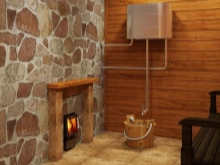
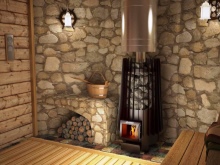
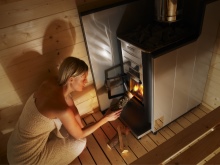
Drainage equipment
But not enough just to submit and heat water - you must still do with his hands a channel for the drainage of spent liquid. The most rational option is chosen taking into account what type of floor is planned to create. In the leaking floor make a hole and then direct the water from there in the downward direction. From the waste tank, the flow goes directly to the sewer. The second type involves the use of an inclined floor with gutters and drains.
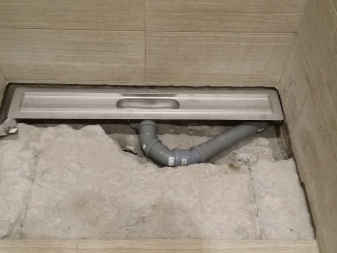
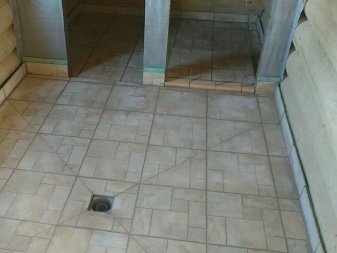
Constructing a cabin
The design of the shower cabin in the sauna is chosen purely at its discretion. The need to create a cabin due to the fact that the usual water, concrete or tile floor under the influence of water will inevitably wear out. A special tray completely solves this problem. Booths are started by making a frame level on the wall. The second frame is screwed to the other wall; it is recommended to make it with a slope of 0.01 m.
The third frame should be 0.01 m lower than the second unit.

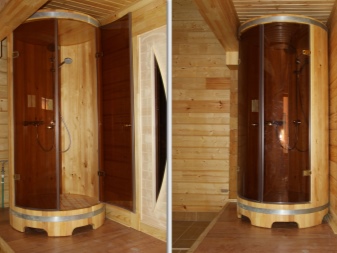
The fourth frame is selected and shaped so that everything together is harmonious and stable.
The next step is the formation of the side wall. The wall of the cabin itself is attached to it. Having formed the box, cover the table top with OSB, and the front wall is covered with batten with the lock location to the top; such a solution will ensure the drainage of the liquid exactly into the tray, regardless of the situation.
Next steps:
-
cladding the side wall with batten;
-
cladding the outer wall with the same linings;
-
installation of the shower cabin itself;
-
the formation of the drain;
-
sealing of joints with silicone-based sealant.
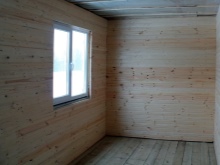
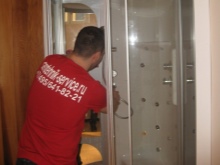
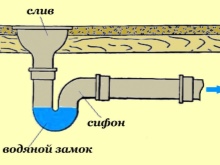
Recommendations
When evaluating the location of the shower, you need to consider the distance not only to the water intake, but also to the drain. The less drain pipes to pull, the better. If electric water heaters are used, it is necessary to lay a powerful wiring. It is also desirable to provide a fairly powerful circuit breaker. It is also important to have a separate circuit breaker, which allows you to disconnect only the line used for the speaker, boiler or boiler.
Here are a few more tips:
-
The storage water heater will allow along with the shower to dispense water to several other points;
-
cope with unstable pressure in the plumbing helps to install an attic pump with receivers;
-
The layer of insulation should be 0,05-0,07 m;
-
When using prefabricated pallets need to carefully verify completeness.
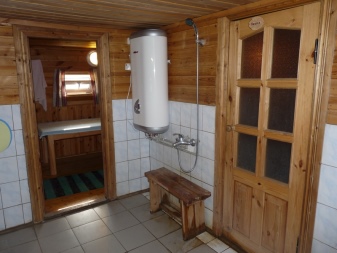
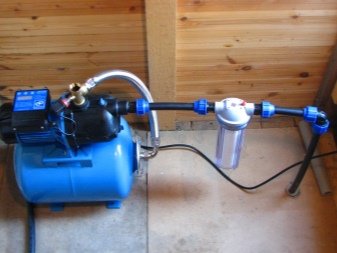
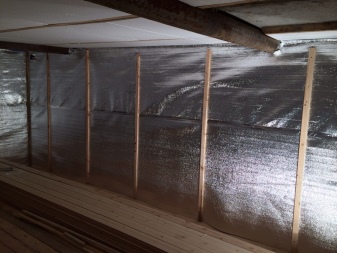
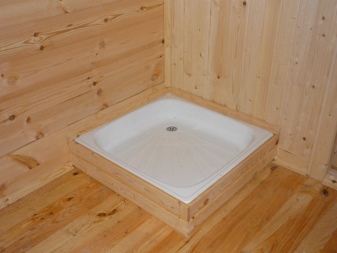
Prefabricated examples
This is what one of the great showers looks like in a wood-finished bathhouse. The semi-circular design feels very good.
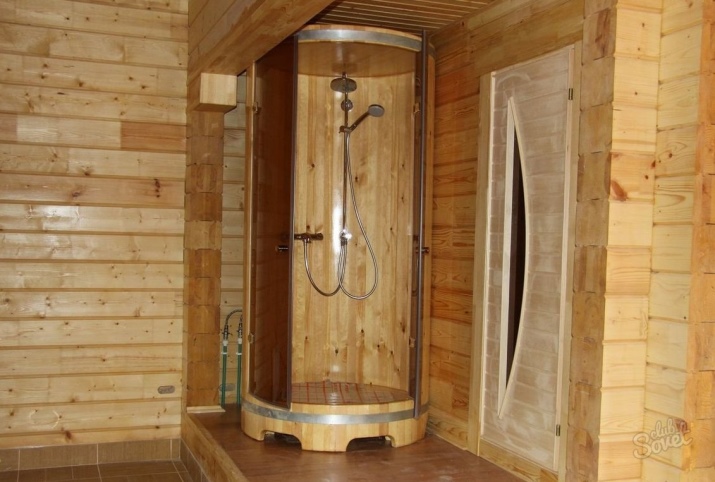
And this is an excellent solution for a log sauna. Even the maximum proximity of the heating column is not perceived alien and too rude. In general, the resulting composition is elegant, albeit somewhat gloomy (because of the dark colors).
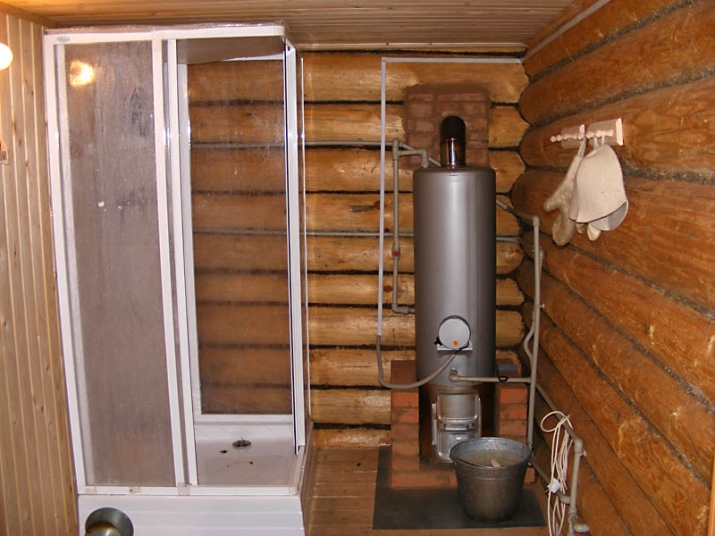
How to make a shower room in the bath, see below.




